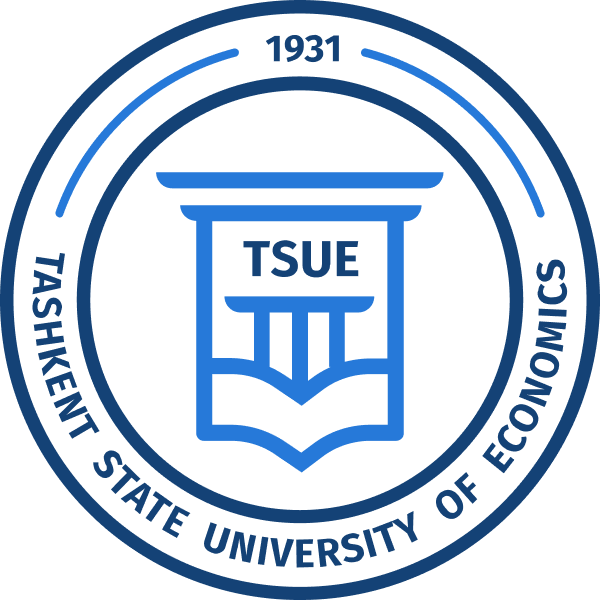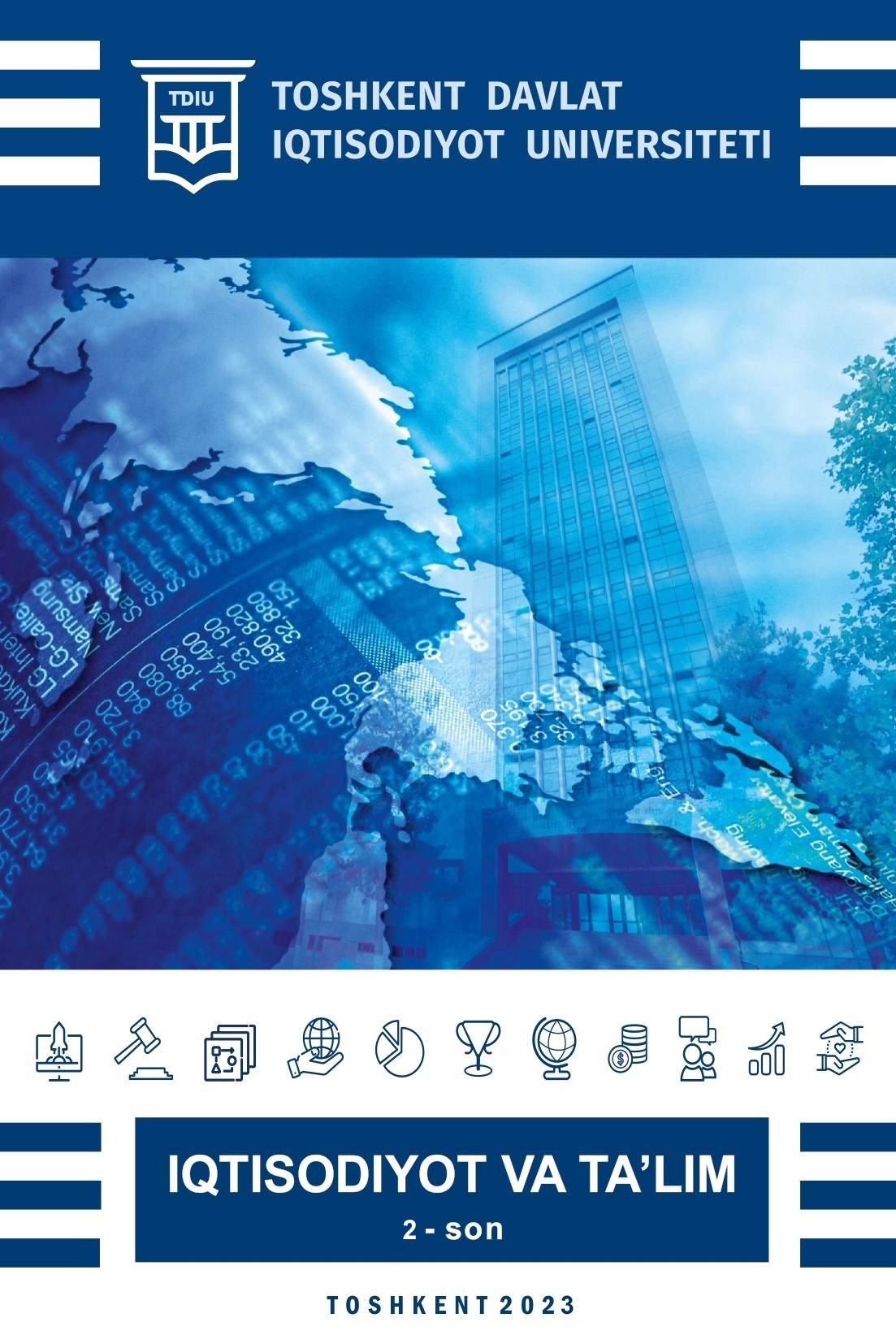Abstrak
Tadbirkorlik faoliyati rivojlantirishining asosiy omili raqobatchilarning raqobatbardosh harakatlariga moslashishdir. Buning uchun raqobatchilar faoliyatini tahlil qilishda zamonaviy marketing tadqiqot vositalaridan samarali foydalanish tadbirkorlik subyektlarini global va mahalliy raqobatga qarshi turishlari katta ahamiyatga egadir. Biroq, tizimli adabiyot resurslari biznes raqobatchilarni tahlil qilish jarayonini birlashtirish sohasida cheklangan, bu tadbirkorlik kompaniyalarining harakat rejasiga taʼsir qiladi, bu esa strategik muvaffaqiyatsizlikka yoki kontentni taʼminlanmaganligi sababli noto‘g‘ri rejalashtirishga olib keladi. Shunday qilib, ushbu kontentdagi axborot resurslarni boyitish maqsadida tahliliy maqolada tadbirkorlik sohasida raqobatbardoshlik tadqiqotini o‘tkazishning ahamiyati, zarurati, tadqiqot jarayonlarida hal qilish uchun bir nechta mezonlarga asoslangan ammo, birlashtiruvchi asosda tashkil etiladigan raqobat tadqiqotining turlari hamda tahlil qilish usullarini tizimlashtirishga qaratilgan. Shuningdek, ushbu maqolada "raqobat bo‘yicha tadqiqot qarorlarini qabul qilish va o‘tkazish jarayonlari" ishlab chiqilgan. Ushbu tadqiqotda keng qamrovli adabiyotlarni o‘rganish hamda mutaxassislardan intervyu va so‘rovnomalar olish orqali maʼlumotlar yig‘ilgan. So‘rovnomada 1 dan 9 gacha bo‘lgan shkala bo‘yicha har bir mezonning muhimlik darajasini o‘lchash va muhimlik mezonlari ierarxiyasini ishlab chiqish uchun tahlil qilish uchun modellash vositasi sifatida ishlatilishi mumkin bo‘lgan ko‘p mezonlarga asoslangan qaror qabul qilish vositasi qo‘llanildi. Ushbu tadqiqot natijalari raqobatchilarni tadqiq qilish bo‘yicha mavjud bilimlarni mustahkamlash va tadbirkorlik subyektlarini o‘z biznes jarayonlarida raqobatchilar tadqiqotlarida foydalanish uchun tavsiya etiladi. Shuningdek, ushbu maqolaning nazariy va amaliy natijalari kelajakdagi tadqiqotlar uchun asos sifatida xizmat qilishi mumkin.
Bibliografik manbalar
Wen, M., Li, M., Hu, C., Hakro, S., Hussain, A., Heydari, M., ... & Arzo, S. (2021). Mathematical Methods for Identification of Core Competitors: Based on Social Networks and Hierarchical Cluster Analysis. Mathematical Problems in Engineering, 2021, 1-9.
Dobele, L., & Pietere, A. (2015). Competitiveness of social entrepreneurship in Latvia. Regional Formation and Development Studies, 17(3), 40-50.
Wen, M., Li, M., Hu, C., Hakro, S., Hussain, A., Heydari, M., ... & Arzo, S. (2021). Mathematical Methods for Identification of Core Competitors: Based on Social Networks and Hierarchical Cluster Analysis. Mathematical Problems in Engineering, 2021, 1-9.
Damm, Å. (2012). Technology and competitor mapping designed to support strategic business decisions. World Patent Information, 34(2), 124-127.
Sarvary, M., & Parker, P. M. (1997). Marketing information: A competitive analysis. Marketing science, 16(1), 24-38.
Li, M., Lin, Z., & Liu, J. (2010). Coexistence in a competitor–competitor–mutualist model. Applied mathematical modelling, 34(11), 3400-3407.
Woo, A., Park, B., Sung, H., Yong, H., Chae, J., & Choi, S. (2021). An analysis of the competitive actions of boeing and airbus in the aerospace industry based on the competitive dynamics model. Journal of Open Innovation: Technology, Market, and Complexity, 7(3), 192.
Listra, E. (2015). The concept of competition and the objectives of competitors. Procedia-Social and Behavioral Sciences, 213, 25-30.
Kao, D. T. (2016). The moderating roles of ad claim type and rhetorical style in the ads of competitor brands for diluting the consumers' brand commitment to the existing brands. Asia Pacific Management Review, 21(1), 9-17.
Hosseini, A. S., Soltani, S., & Mehdizadeh, M. (2018). Competitive advantage and its impact on new product development strategy (Case study: Toos Nirro technical firm). Journal of Open Innovation: Technology, Market, and Complexity, 4(2), 17.
Jin, J., Ji, P., & Gu, R. (2016). Identifying comparative customer requirements from product online reviews for competitor analysis. Engineering Applications of Artificial Intelligence, 49, 61-73.
Albayrak, T. (2015). Importance Performance Competitor Analysis (IPCA): A study of hospitality companies. International Journal of Hospitality Management, 48, 135-142.
Munizu, M., Damang, K., Asdar, M., & Brasit, N. (2019, February). A study on priority factors of competitiveness and performance of manufacturing companies using Analytical Hierarchy Processes (AHP). In IOP Conference Series: Earth and Environmental Science (Vol. 235, No. 1, p. 012057). IOP Publishing.
Singer, A. E., & Brodie, R. J. (1990). Forecasting competitors' actions: An evaluation of alternative ways of analyzing business competition. International Journal of Forecasting, 6(1), 75-88.
Jamil, G. L., Pinto Ferreira, J. J., Pinto, M. M., Magalhães Pessoa, C. R., & Xavier, A. (Eds.). (2018). Handbook of Research on Strategic Innovation Management for Improved Competitive Advantage. IGI Global.
Li, J., Zhang, Y., Yang, Y., Zhang, X., Wang, N., Zheng, Y., ... & Xie, K. (2022). Life cycle assessment and techno-economic analysis of ethanol production via coal and its competitors: A comparative study. Applied Energy, 312, 118791.
Jin, J., Ji, P., & Gu, R. (2016). Identifying comparative customer requirements from product online reviews for competitor analysis. Engineering Applications of Artificial Intelligence, 49, 61-73.
Perez, D., Stockheim, I., & Baratz, G. (2022). Complimentary competition: the impact of positive competitor reviews on review credibility and consumer purchase intentions. Journal of Retailing and Consumer Services, 69, 103093.
Werle, M., & Laumer, S. (2022). Competitor identification: A review of use cases, data sources, and algorithms. International Journal of Information Management, 65, 102507.
Dowling, M., & Singh, S. (1994). The developing electronic messaging market in the United States: Market overview and analysis of key competitors. Telematics and Informatics, 11(1), 61-76.
Chen, Y. C., Lin, Y. H., Li, P. C., & Chen, C. J. (2022). Understanding the interplay between competitor and alliance orientations in product innovativeness: An integrative framework. Technological Forecasting and Social Change, 175, 121358.
Boehe, D. M., & Becerra, M. (2022). Market entry into new export markets: When are firms more likely to imitate their competitors’ market presence? International Business Review, 31(5), 102012.
Hatzijordanou, N., Bohn, N., & Terzidis, O. (2019). A systematic literature review on competitor analysis: status quo and start-up specifics. Management Review Quarterly, 69(4), 415-458.
Amit, R., Domowitz, I., & Fershtman, C. (1988). Thinking one step ahead: The use of conjectures in competitor analysis. Strategic Management Journal, 9(5), 431-442.
Шаропова, Н. (2020). Мактабгача таълим хизматларининг инсон капиталини оширишдаги таъсирини аниқлашда маркетинг тадқиқот усулларининг самарадорлиги. Экономика и инновационные технологии, (1(2), 167–178.
Sharopova, N. (2023). TADBIRKORLIK FAOLIYATIDA RAQAMLI MARKETING TADQIQOTLARINING ZARURATI. Engineering problems and innovations.
Zufarova, N. (2020). Influence of internalization to the competitiveness of higher education in The Republic of Uzbekistan. Asian Journal of Technology & Management Research, 10(01).
Sirikrai, S. B., & Tang, J. C. (2006). Industrial competitiveness analysis: Using the analytic hierarchy process. The Journal of High Technology Management Research, 17(1), 71-83.
Delbari, S. A., Ng, S. I., Aziz, Y. A., & Ho, J. A. (2016). An investigation of key competitiveness indicators and drivers of full-service airlines using Delphi and AHP techniques. Journal of Air Transport Management, 52, 23-34.
Muhammadolimovna, K. Z. (2022). USING MATERIALS FOR INTERACTIVE ESP LESSONS. Journal of Academic Research and Trends in Educational Sciences, 1(5), 131-136.
Qizi, A. S. A. (2022). Functional Characteristics of Paralinguistic Tools. Vital Annex: International Journal of Novel Research in Advanced Sciences, 1(6), 53-56.
Alikovich Eshbayev, O., Xamidovich Maxmudov, A., & Urokovich Rozikov, R. (2021, December). An overview of a state of the art on developing soft computing-based language education and research systems: a survey of engineering English students in Uzbekistan. In The 5th International Conference on Future Networks & Distributed Systems (pp. 447-452).

This work is licensed under a Creative Commons Attribution-ShareAlike 4.0 International License.
Copyright (c) 2023 Iqtisodiyot va taʼlim

